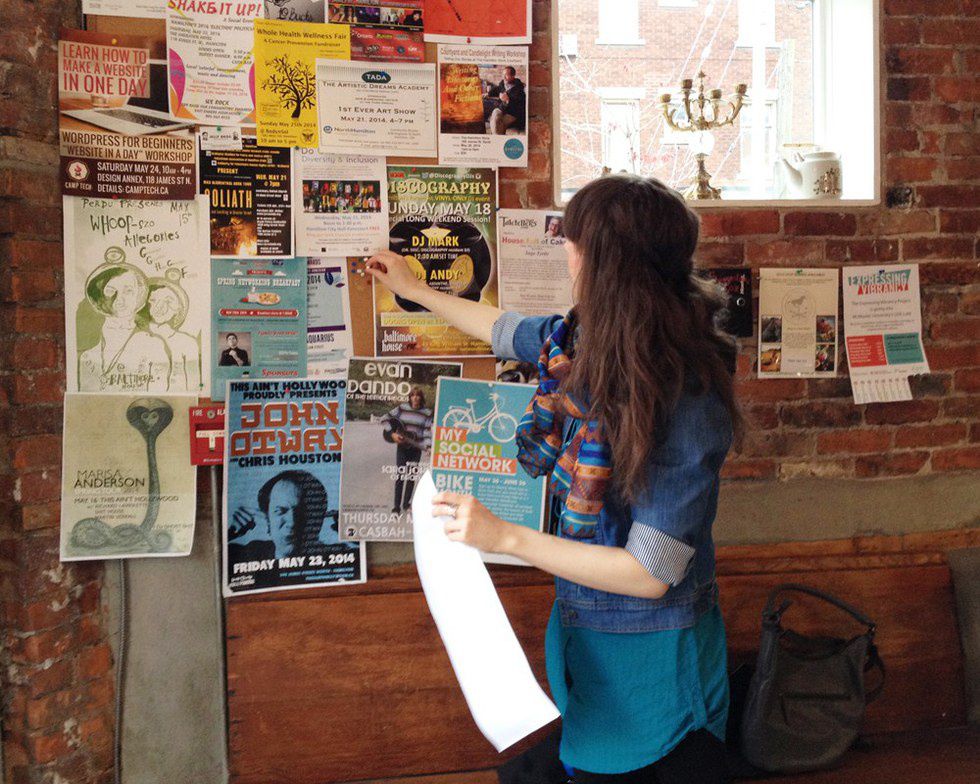Are they flight attendants, jesters, or well-coordinated, Paul Taylor dance protégés? If you guess the latter, you are correct. These brightly costumed performers are part of UNC Charlotte's annual Fall Dance Concert at Robinson Hall. But, in the first of six acts in the concert, the dancers --in bright yellow and deep crimson red patterned dresses, designed with a single triangle, circle and rhombus on the front—prance around the stage in a choreographic bit that playfully nudges at ballet formalities in a node to Paul Taylor, the patron choreographer saint of the program.
Taylor is a renowned modern dance choreographer who steers the Paul Taylor Dance Company. Taylor’s crew came and trained the dancers of UNC Charlotte’s Dance Department, and in a Hansel and Gretel fashion, left his bread crumbs behind in this year’s fall dance concert. Each performance contained Taylor’s signature dance moves, from the skip and a hop, the infamous leprechaun jump, and the sudden disappearance and reappearance of dancers behind the curtains. These elements are also present in, Flower Festival at Genzano Pas de Duex, a charming, polite dance between a man and woman presumably attending a formal, outdoor event. The costumes resembled the animated film Alice and Wonderland. There were many distinct pauses that may signify the ending only to be picked up in pace.
The injection of Disney movies did not stop there. Sleeping Beauty Act III Jewels, placed viewers in the palace of PrincessAurora with three women in ballerina, pink tutus and a large, bejeweled crown atop their heads. The ballerinas, representative of the jewel fairies, lightly spun around to airy, happy, classical music by Tchaikovsky.
Most captivating was Broken Parts, a routine that investigates the universal experience of loss through the exploration of the five stages of grief: denial, isolation, guilt, anger and acceptance. The performance begins with a deep, dark monologue that briefly reminds listeners of Beyonce’s ‘Freedom’ monologue. The dancers utilize four benches, the dark and a dim light, deep breathing and break the fourth wall in this interpretive, sensual dance. Each swift movement cleanly executes each stage of grief.
After that intense, sentimental dance routine, the night flashbacked to the Swing Era in It Is What It Is (I.I.W.I.I). The girls in the metallic, brightly colored dresses brought back a vintage jazz dance, the Big Apple, which originated in Columbia, S.C. at a night club of the same name. The routine incorporated classic swing dance styles and steps like Rubber Legs, Boogie, and Trucking, as the dancers shouted and cried, emphasizing many dramatic movements. While most floor patterns are standard, I.I.W.I.I demonstrated historical, popular entertainment dance in a Las Vegas with a touch of Flinstones fashion.
The night ended with the only official Taylor piece, Esplanade, a routine first performed in 1975. Esplanade was inspired by the sight of a girl running to catch a bus and based on pedestrian movement. The pastel colored costumes remind you of the original series of Scooby Doo. In this piece Taylor would use everyday movements such as standing, walking, running, sliding and falling to a slow-tempo.
Taylor and his troupe may not have been in the building this evening, but his spirit and passion for modern dance were, delivered by a new generation of dancers, who demonstrate that his principles can apply to any era while ensuring that modern dance flourishes.


















